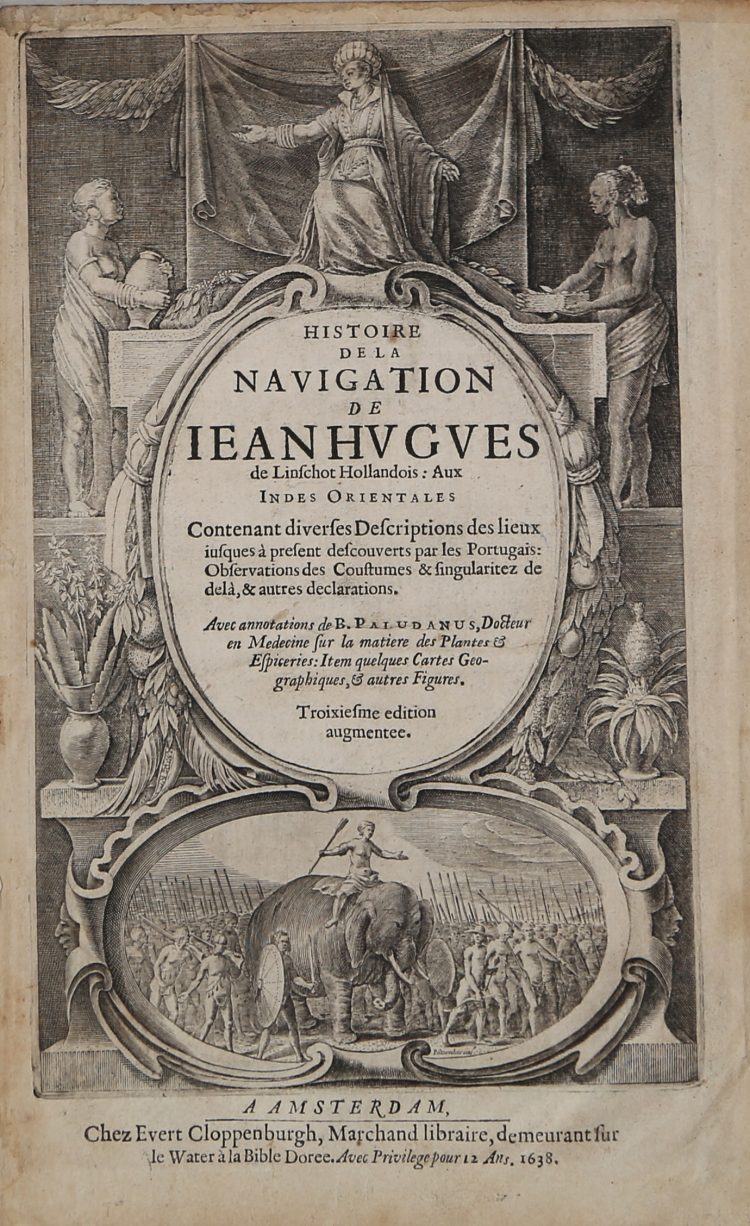


| Reference: | ms6387 |
| Author | Jan Huygen VAN LINSCHOTEN |
| Year: | 1638 |
| Zone: | Title page |
| Printed: | Amsterdam |
| Measures: | 165 x 270 mm |


| Reference: | ms6387 |
| Author | Jan Huygen VAN LINSCHOTEN |
| Year: | 1638 |
| Zone: | Title page |
| Printed: | Amsterdam |
| Measures: | 165 x 270 mm |
Title page of the famous Itinerario, voyage ofte schipvaert van J.H. van Linschoten naar Oost ofte Portugaels Indien. St Helena was an important early re-supply point for the Portuguese from the late 1400s, particularly on their return voyages from Asia.
This plate appeared in Linschoten's book in 1596, once he came back from the Indies.
The engraver for this plate was Baptista van Doetechum.
|
Schilder, Gunter, Monumenta Cartographica Neerlandica, vol VII.
|
Jan Huygen VAN LINSCHOTEN (1563 - 1610)
|
Van Linschoten, born in Haarlem, is heard of in the service of the Portuguese Archbishop of Goa where he spent five years between 1583 and 1588. On his return to Holland he produced a History of his travels, important for the inclusion of maps from Portuguese sources, at that time rarely available to Dutch - or any other - cartographers. The maps (including a world map by Petrus Plancius) engraved by van Langren, are highly decorative with large cartouches, the arms of Portugal, compass roses, rhumb lines and sea monsters. Some are illustrated with views of prominent places or islands.
|
|
Schilder, Gunter, Monumenta Cartographica Neerlandica, vol VII.
|
Jan Huygen VAN LINSCHOTEN (1563 - 1610)
|
Van Linschoten, born in Haarlem, is heard of in the service of the Portuguese Archbishop of Goa where he spent five years between 1583 and 1588. On his return to Holland he produced a History of his travels, important for the inclusion of maps from Portuguese sources, at that time rarely available to Dutch - or any other - cartographers. The maps (including a world map by Petrus Plancius) engraved by van Langren, are highly decorative with large cartouches, the arms of Portugal, compass roses, rhumb lines and sea monsters. Some are illustrated with views of prominent places or islands.
|